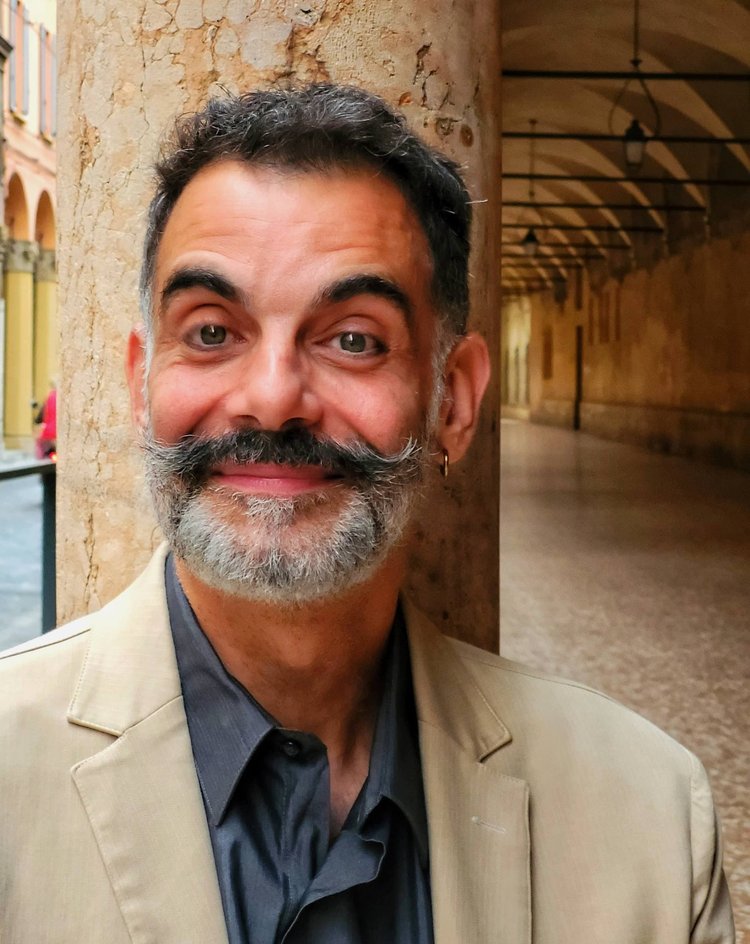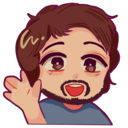Some Thoughts with ... Giovanni De Feo
1 Aug 2025The Author/s

Giovanni De Feo
Giovanni De Feo is a fabulist, novelist, and comic book writer. He previously taught literature at International Baccalaureate schools in England and Holland. Currently, he lives in Bologna, Italy, where he is also a performing storyteller with a repertoire of Italian folktales.
The Interview
1.- Could you introduce yourself to Jamreads’ readers?
My name is Giovanni. I’m a novelist, a comic book writer, and a lecturer in literature and creative writing. I’m also a traditional storyteller—I love sharing stories about local folklore and history whenever someone gives me the chance.
2.- When did you start writing with publishing in mind?
I've wanted to be an author since I was 8 years old. On that day, I read a story to my class that I had just ‘dreamed up’ for a school assignment. That feeling of sharing something vibrant and alive within me, and seeing it reflected on my classmates’ faces, stayed with me for life.
3.- Correct me if I’m wrong, but you initially started publishing in Italian. When did you start working on your stories in English?
My first attempts were in the mid-90s, but I really started writing short stories for the American market in the 2010s. Mostly speculative fiction, though I’ve also written some literary stuff—there are a couple of stories in Conjunctions (https://conjunctions.com/articles/giovanni-de-feo-08-04-2015/).
4.- How did the first idea for The Secret Market of the Dead come about?
Well, The Secret Market is my second novel set in Luceria. Since the first one remains unpublished, I initially hesitated to create another story in that same universe. When I designed Luceria, my goal was to craft a fantastic world that could incorporate every shade of speculative fiction—from the short, Borges-like stories to pure adventure. Oriana, in particular, came to life during a storytelling café event. The mother of one of my students, the daughter of a famous chef, told me she was never told family recipes—they belonged only to the men, traditionally. That struck me as quite odd, yet also very revealing of a mentality I’ve seen plenty of here in Southern Italy.
Oriana emerged as a stubbornly odd character—a teenage Illuminist living in a town literally haunted by night spirits. She’s a crucible of contradictions: rational in the face of the ominous, yet open to the deep currents of the Night. That’s what makes her feel real and alive to me.
On a personal note, I’ve always felt Oriana’s struggles mirror my own. She tried to do what, in her world, was impossible—and so did I. I’m not sure if she’s my shadow or I’m hers, but she’s very much alive within me.
5.- Luceria is a rich world, full of folklore and traditions. What are your main sources of inspiration for it?
There’s a scene in Princess Mononoke where the protagonist enters a forge that feels both utterly historical and fantastical at the same time. The Secret Market grew out of that feeling—a narrative space where history and fantasy blend seamlessly.
Of course, Susanna Clarke’s work and The Sandman comics were huge influences. Gustave Doré’s artwork, also played a big role in shaping the night scenes. Clive Barker's Abarat. Carlo Ginzburg’s research on folklore and Ernesto De Martino’s studies on magical folklore, too. Katherine Briggs’ work on British fairies. But most of all, it’s the iconography of Catholic saints—the mix of the macabre and the sacred, the deep mystery intertwined with local legends—that inspired me.
I also drew from my own family stories since my family is from near Apulia. My father still tells the story of how he once met a Monaciello — what I refer to as a Mazapegul, a little monk — while sleeping in his brother’s bed. It’s not just Italy; stories like this are everywhere. What appeals to me is the blend of the familiar and the strange, the hyper-natural—making the otherworldly both cozy and frightening at the same time.
Finally, I even incorporated some Extremaduran folklore, thanks to El bosqueto de to [https://elbosquedeto.com] who hosted me while I was rewriting parts of the novel. I fell in love with their books on local festivities fascinating—a spicier, more intense version of our Italian folk festivals.
6.- I find the Nocturnals and their way of acting especially interesting. What inspired you to create this series of characters and their realm? Is there a particular one that’s your favorite?
Honestly, I have no idea. They just appeared to me. Ossifrago, for example, just dropped into my head as a teenager—a creature with a bulbous head and the Dawn tied around his neck like a cloak. When you’re dealing with these huge, archetypal forces, I don’t think you can simply craft them deliberately. They come from a hundred different sources and merge spontaneously. They need to be alive, not planned.
Choosing a favorite Nocturnal is dangerous. To truly understand the spirits that inhabit us, we have to accept them as a whole. Picking just one leads to possession—believing we belong solely to one force, one part of the soul.
That’s where I think polytheism still has something valuable to teach us.
7.- How much time have you been working on The Secret Market of the Dead, and how much has it changed since you started?
Not much, honestly. What you see here is just part of a bigger story—an introduction to a disastrous historical event, the invasion of the French revolutionary army, and the utter mayhem it brought. Hopefully, we’ll get there, eventually.
8.- For people who enjoyed Luceria and its world, what IRL places would you recommend they visit?
Definitely Lucera, of course—that’s my shadow-town, the place I took the name from, along with many of the locations in my Luceria. It’s really a special place.
For a more nocturnal, mystical vibe, I’d suggest Calcata or Civita di Bagnoreggio. Both abandoned towns that, especially at night, evoke that decadent, dilapidated feeling I connected to the unknown and the mysterious segments of the Night.
9.- What do you like to do in your free time?
I walk. I prefer that word over “hiking.” Walking thousands of miles is a great way to clear your soul and find peace. And inspiration.
10. What can we expect from Giovanni De Feo in the future?
I have a graphic novel coming out in September (yes, in Italian), published by Tunuè, Paco Roca’s Italian publisher. It’s called La Lunga Infanzia, i.e. the Long Childhood. It’s a completely different kind of speculative story, a mix of weird fiction –in a Todorovian sense– and autobiography. We’ve been working on it for nearly half a decade and it’s really a labor of love.
There are also other mythical, odd, speculative stories—short and long, inside and outside of Luceria and the Night. We’ll see where their paths lead…
